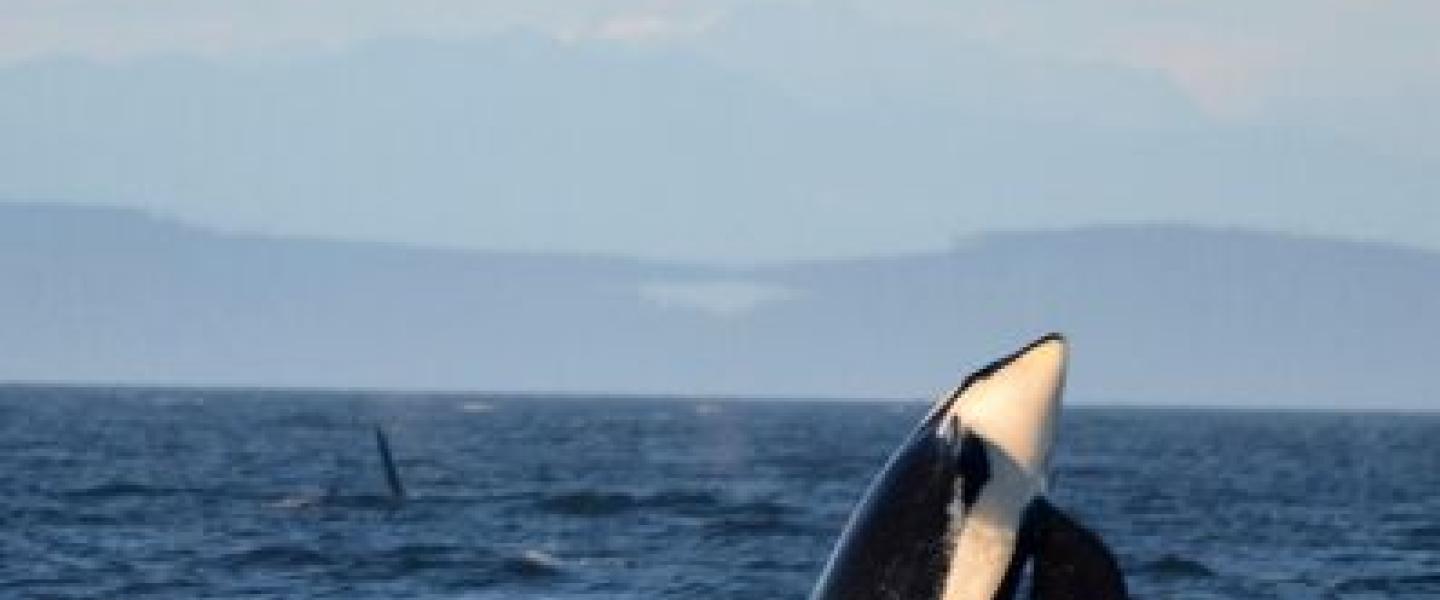
Erin | M/V Kestrel | 11:00 AM | Saturday, August 31, 2019
Today was an absolutely phenomenal day full of breaching and surface-active behaviors! We headed south out of Friday Harbor with the sun shining and the water calm. We made our way down to Cattle Point. At Cattle Point, we saw some upwelling happening around us. It was incredible! We then went over to Whale Rocks, which had Steller sea lions hauled out on them and swimming around them! They are massive animals, weighing up to 2400 pounds and measuring up to 12 feet long. They are the largest sea lion in the world. There were at least 20 of them in total, and we got to hear them making their unique noises and see them climbing up the rocks. It was incredible. We also saw some of them rolling around in the water and playing with each other. Steller sea lions are gone from the Salish Sea for most of the summer, so it is always a treat to be able to see so many of them. We left Whale Rocks and headed toward McArthur Bank, where there was a report of a humpback whale!
We arrived at McArthur Bank and soon saw a giant blow in the distance. It was the blow of a humpback whale! Their blow is about 15 feet tall and can be seen from miles away. We got closer to the whale and it soon took a dive. The whale was taking very short dives throughout our whole encounter with it, with the longest one being about 4 minutes. We had been watching it for about 10 minutes when all of the sudden the whale brought its entire body out of the water in a full, spinning breach! It was a huge surprise and I think that most of us were stunned. How incredible to see a 40-50 ton animal fly out of the water with such grace! The whale then continued to breach, and did it about 4 more times! We started to try to predict when it was going to happen again, and some of us were actually correct. The whale then went back to swimming in large circles and doing fluke-up dives. It showed its gigantic fluke many times as we watched it, which was all black. The fluke is the underside of the tail. We left the humpback whale in search of some killer whales that were reported on the west side of San Juan Island.
When we arrived at Eagle Cove, we could see some large dorsal fins and blows near the shoreline. They were killer whales! They travelled along the shoreline throughout our whole encounter with them. It seems to be a common thing for killer whales to do. Perhaps they were searching for food in the abundant kelp beds along the shore. We could tell that they were doing more than just hunting, though, because many of them were splashing around! We saw whales breaching, tail-slapping, and porpoising. The whales were travelling north, towards the direction that some of the other members of their pod were in. The pod was identified as J pod, which is part of the critically endangered population of Southern Resident killer whales. Southern Residents primarily feed on Chinook salmon. We were all entranced with their unique behaviors, especially when we saw some of the adult whales breaching. We haven't seen the Southern Residents very much during this summer season, so it was a special and rare occasion to be able to view them in their natural habitat.
We headed back toward Friday Harbor after a splashy, adventurous day in the Salish Sea!
Naturalist Erin